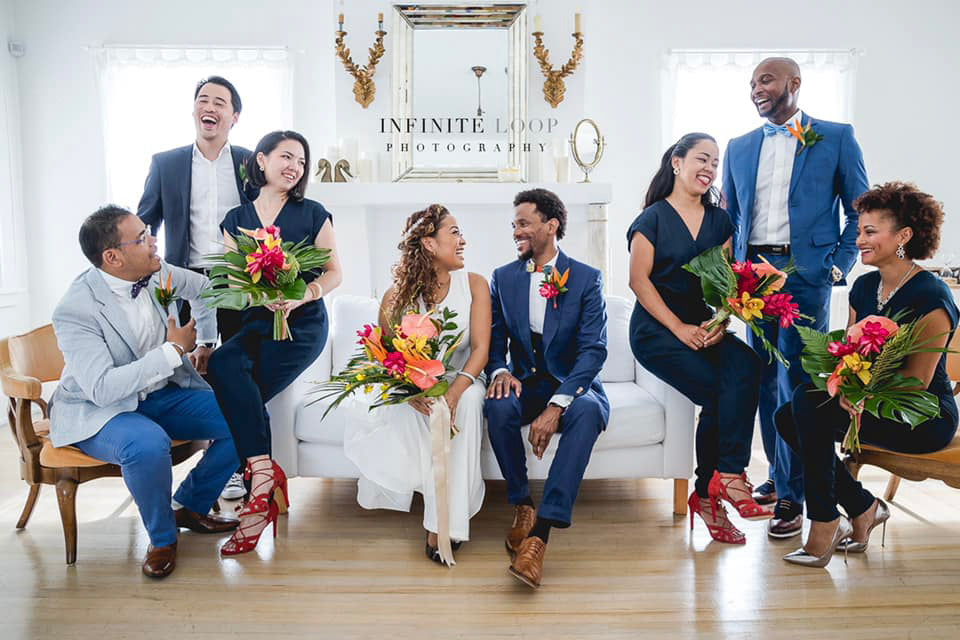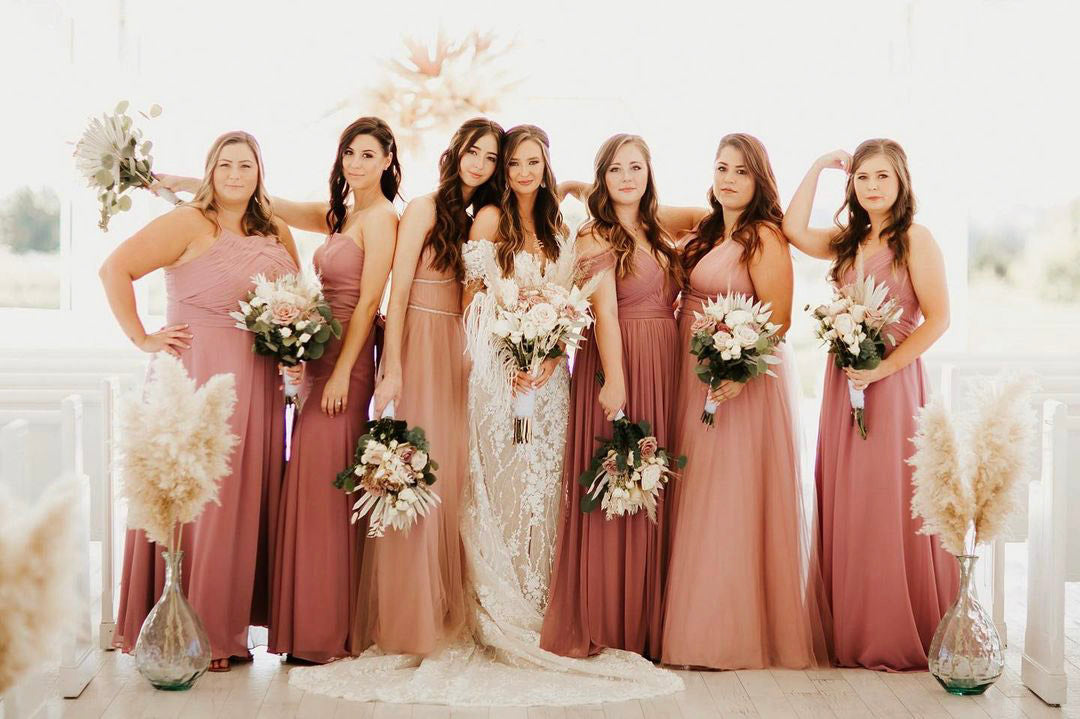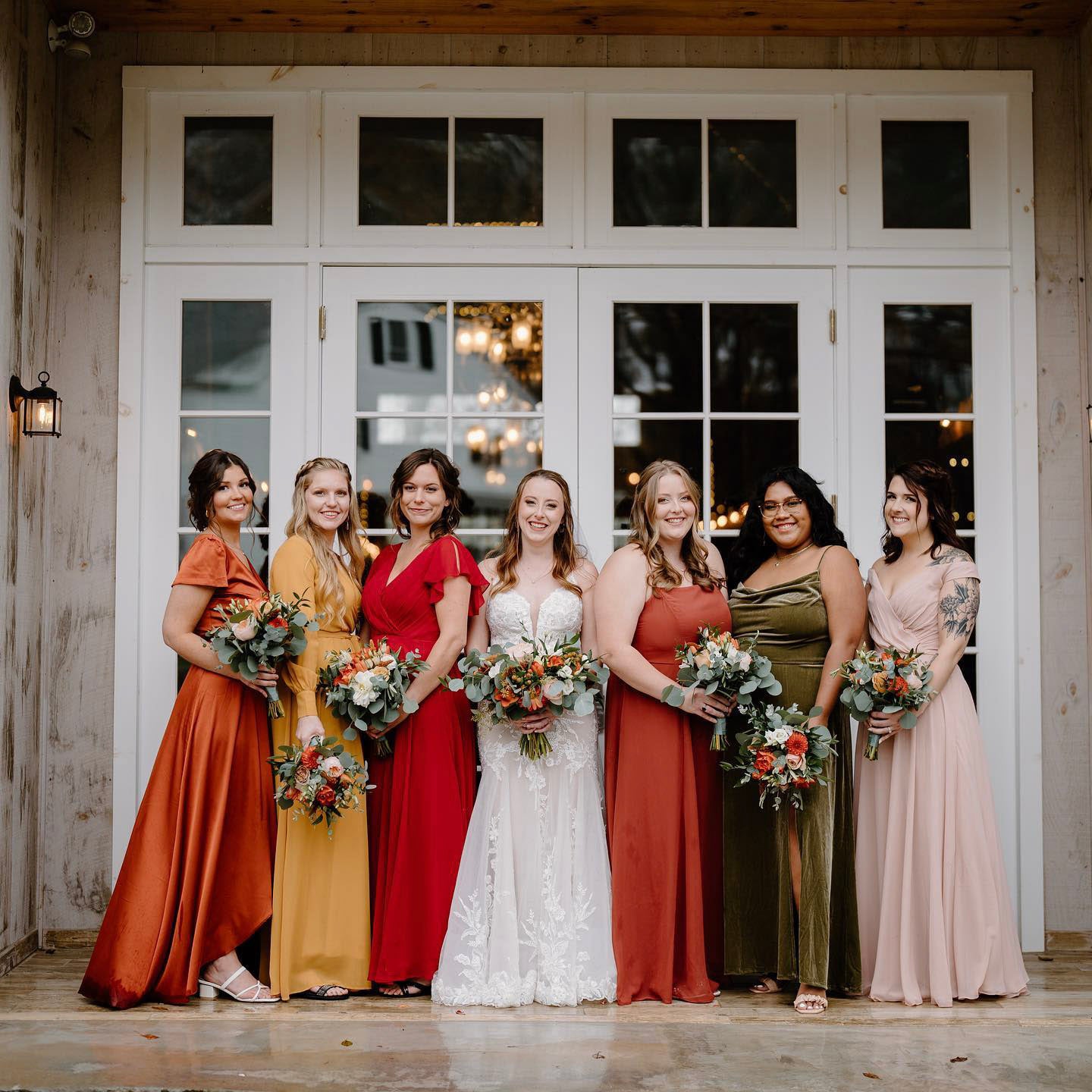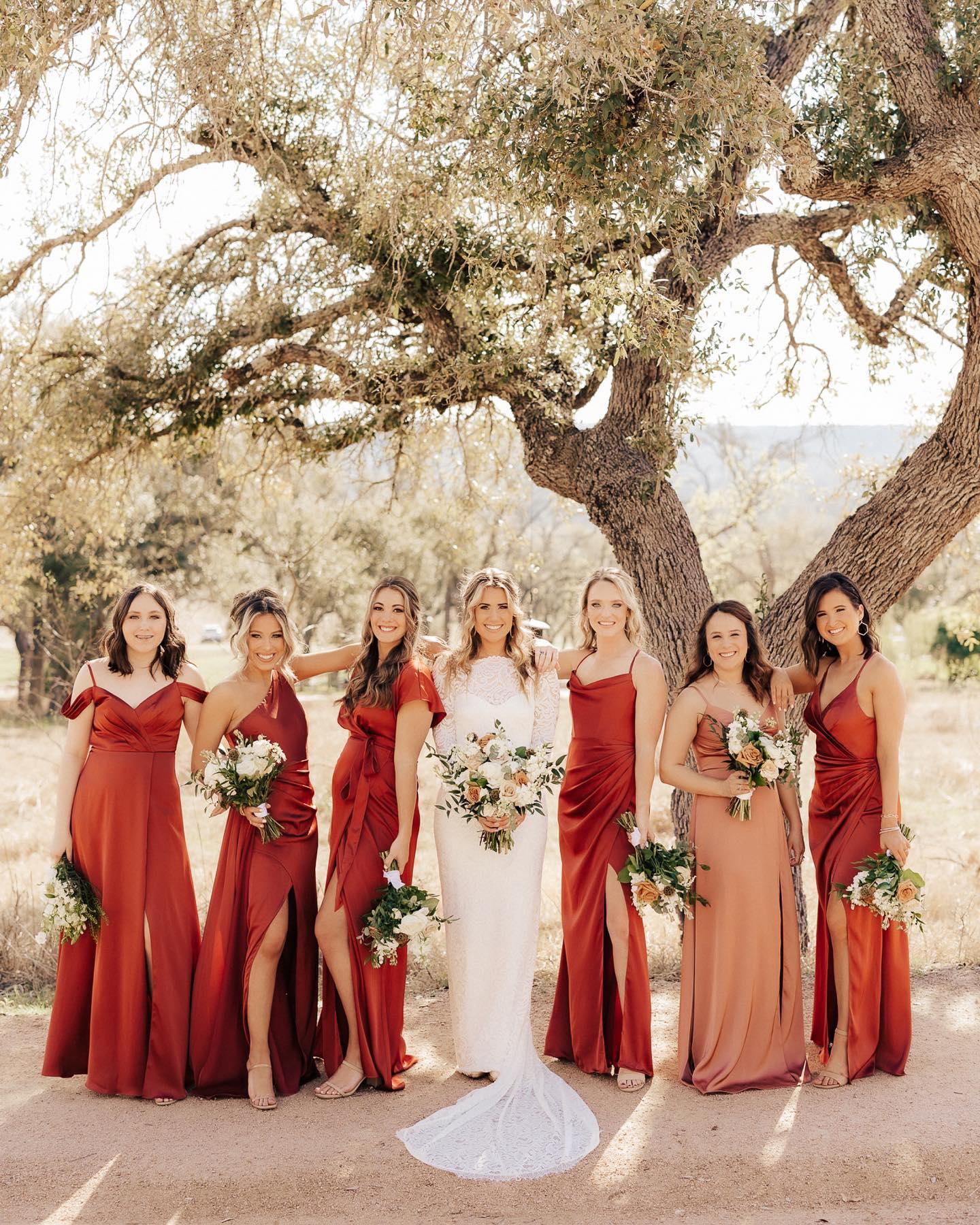
Weddings may revolve around the couple and their family, but the wedding party – bridesmaids, groomsmen, flower girls, and ring bearers – plays a crucial role too. However, capturing their essence can be challenging, especially when dealing with complex scenes, changing lighting scenarios, and multiple people, which is why the photography lighting techniques for wedding party portraits outlined in this blog will undoubtedly help you out! In the photography world, with so many ways to light a simple scene, our easy-to-execute techniques can be modified to fit your style and wedding clients’ needs. Give them a try and see how they elevate your photography game!
Wedding Photography Lighting Techniques To Capture Stunning Wedding Party Portraits
 Image Credit: ShootDotEdit Customer @infiniteloopphoto
Image Credit: ShootDotEdit Customer @infiniteloopphoto
1. Backlighting
Backlighting in photography is a lighting technique where the subject is illuminated from behind, creating a stunning halo effect. It adds depth, drama, and a touch of magic, making your photos stand out! Here are two scenarios to use this lighting trick:
A. Scenario #1: Backlighting portraits when the sun is higher in the skyThe first thing you should look for is the direction of the light. Position your subjects where the sun is hitting their back, creating a flattering shade on their faces. Be cautious of bright sun spots on their faces. When working with a couple or bridal party (essentially more than one person), you may have to ask them to move in small increments just to get the light right on their faces. Lots of people in the wedding party don’t understand the nuances of light and how one small patch of sunlight on their face can ruin a photo. Once you have found great backlight and reflecting light (truly, it’s just a matter of balancing the two!), you can position your subjects in the desired light and start shooting.
B. Scenario #2: Backlighting for a light and airy effect Image Credit: ShootDotEdit Customer @brandiallysephoto
Image Credit: ShootDotEdit Customer @brandiallysephoto
When aiming for a light and airy effect, adjust your backlighting technique. Position your subject with their back to the sun and their face in the shade. This creates a different balance between light and shade compared to the previous example. In the previous technique, the subjects’ faces still had noticeable brightness. In this case, place them in an area with flat-light shadows where the sunlight falls on their back. The contrast in lighting is significant, resulting in a lighter and more blown-out background when captured and edited. This approach works particularly well in green spaces, as trees can contribute to achieving this effect.
Related Read: Shooting With Backlight: A Step-By-Step Photography Guide
2. Work With Ambient Light
Ambient light refers to the existing light present in a scene. One important aspect to consider, when shooting in ambient light, is color temperature. To achieve consistent and natural-looking wedding party photos, it's crucial to ensure that your camera's white balance and flash settings are in sync with the existing wedding reception lighting. Let's say you're photographing the wedding reception in a dimly lit ballroom adorned with elegant uplighting. The cool color temperature of the ambient light sets a sophisticated mood. To achieve consistent results, you can customize your camera's white balance settings to counterbalance the cool tones, resulting in a more balanced and pleasing color palette throughout your images.
By understanding the color or temperature of the ambient light, you can select a custom color temperature in-camera to strike the perfect balance. This harmonizes the different light sources, resulting in a cohesive and timeless look when you compile your couple's wedding album.
3. Harness Natural Light
 Image Credit: ShootDotEdit Customer @andreslopezfilms
Image Credit: ShootDotEdit Customer @andreslopezfilms
Knowing your couple’s desires is crucial when choosing the perfect location for group photos; if they're dreaming of light, airy, and whimsical photos, opt for a sunny spot with a bright background. For those seeking more vibrant and rich colors, consider locations with a touch of grunge, contrast, or bold hues. Moreover, be mindful of the changing direction of natural light throughout the day. Your wedding clients may have a favorite location in mind, but if the natural lighting isn’t right, their dream backdrop may not materialize.
If you're venturing into uncharted territory, scout locations before the wedding party portraits occur. Assess the angle of the sun, the background, and any potential distractions. With this knowledge, you'll be better prepared to navigate the wedding day and set realistic expectations for your clients. Embrace the golden hour or venture indoors to work with window light. By mastering these lighting techniques for wedding party portraits, you'll create an unforgettable visual narrative that your clients will treasure for a lifetime.
Read More: Top 5 Wedding Photography Lighting Tips
4. Bounce Flash For Soft Lighting
 Image Credit: ShootDotEdit Customer @breonnawellsphotography
Image Credit: ShootDotEdit Customer @breonnawellsphotography
Bounce flash is a technique that involves directing the camera flash away from the subject, allowing it to ricochet off surfaces, such as walls or ceilings. The result? A softer, more even light that perfectly complements the romantic ambiance of wedding receptions. To master this subtle craft, begin by selecting the right flash direction. Observe your surroundings and choose a surface that will reflect the light back toward your subject in the most flattering manner. Don't forget to adjust your shutter speed, as this will help you capture the ideal balance between ambient light and flash.
Next, fine-tune your flash power to achieve the desired level of illumination. Remember, the goal is to create a gentle glow that enhances the scene without overpowering it. As you experiment with different lighting setups, you'll develop a keen sense of when to use and avoid bounce flash. With a light stand and lighting assistant by your side and a camera flash that bends to your creative will, you'll be well-equipped to illuminate the magical moments of any wedding reception.
5. Open Shade Lighting
 Image Credit: ShootDotEdit Customer @brandiallysephoto
Image Credit: ShootDotEdit Customer @brandiallysephoto
Another note on lighting techniques for wedding party portraits – find open shade! This is a go-to lighting technique, especially when dealing with large groups and harsh sunlight. Look for an open shade area where sunlight isn't filtering through trees or other objects, ensuring even lighting for all subjects. When you find an open shade area, there will likely be nearby sunlight and a shadow line. Try to position your subjects at or near the edge of this shadow line. Why? Because the sunlight on the other side of the shadow is going to bounce up and reflect natural light onto their faces. The edge of the shadow line offers more contrast, directing light toward their faces and separating them from the background. For a softer look with less contrast, have them move further back into the shade.
Further Read: Wedding Photography Lighting For The Bridal Prep And Details
Capturing stunning wedding portraits requires a deep understanding of various photography lighting techniques. From mastering backlighting to working with ambient light, natural light, employing bounce flash, and utilizing open shade, these methods help you create memorable and visually striking images for your clients. Remember, practice makes perfect. Equipped with these lighting techniques for wedding party portraits, you'll be able to deliver breathtaking wedding photos that will be cherished by your couple and their guests for years to come.
At ShootDotEdit, we are passionate about helping you grow as a wedding photographer. However, if you find that endless editing tasks are blocking your way and sapping your energy, let us help! To learn more about how our professional photo editing services could give you your time back, check out our pricing plans.


Leave a comment